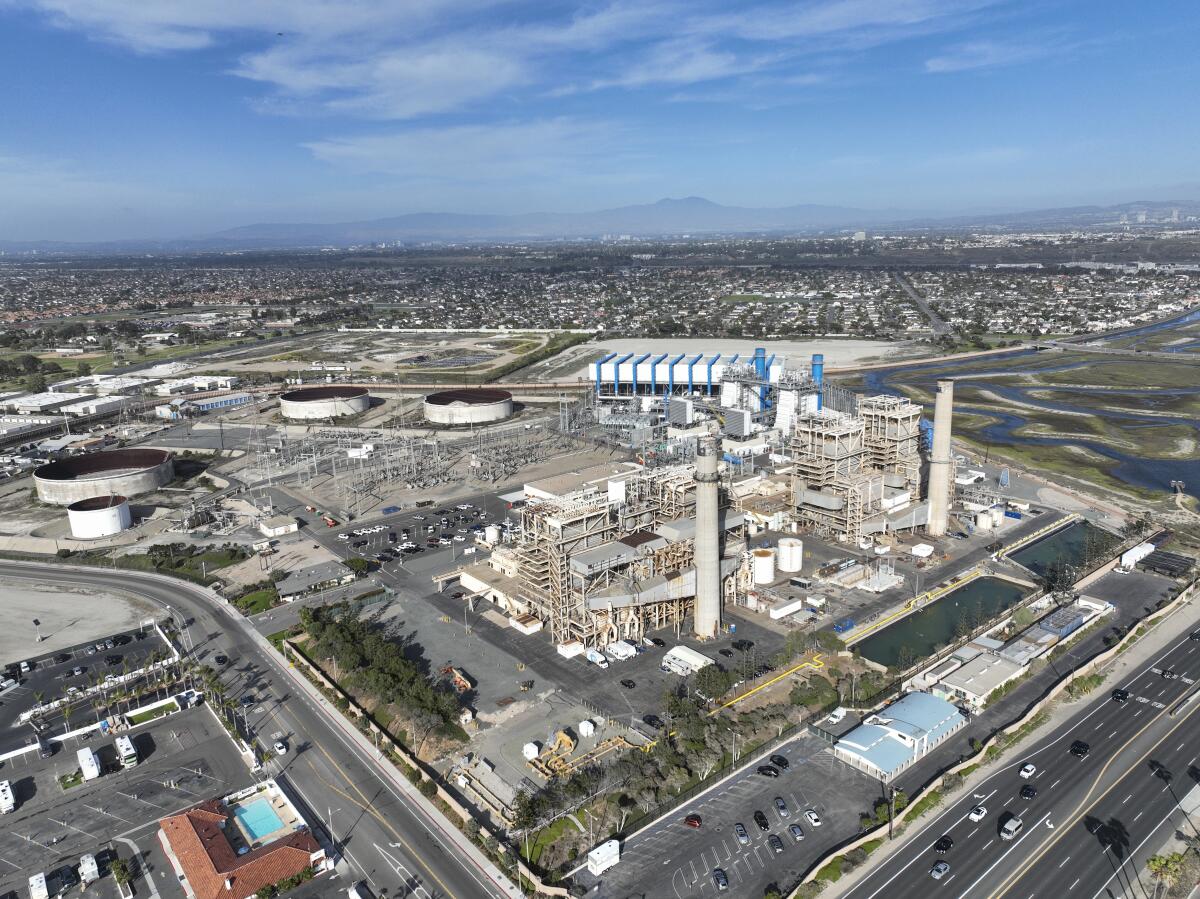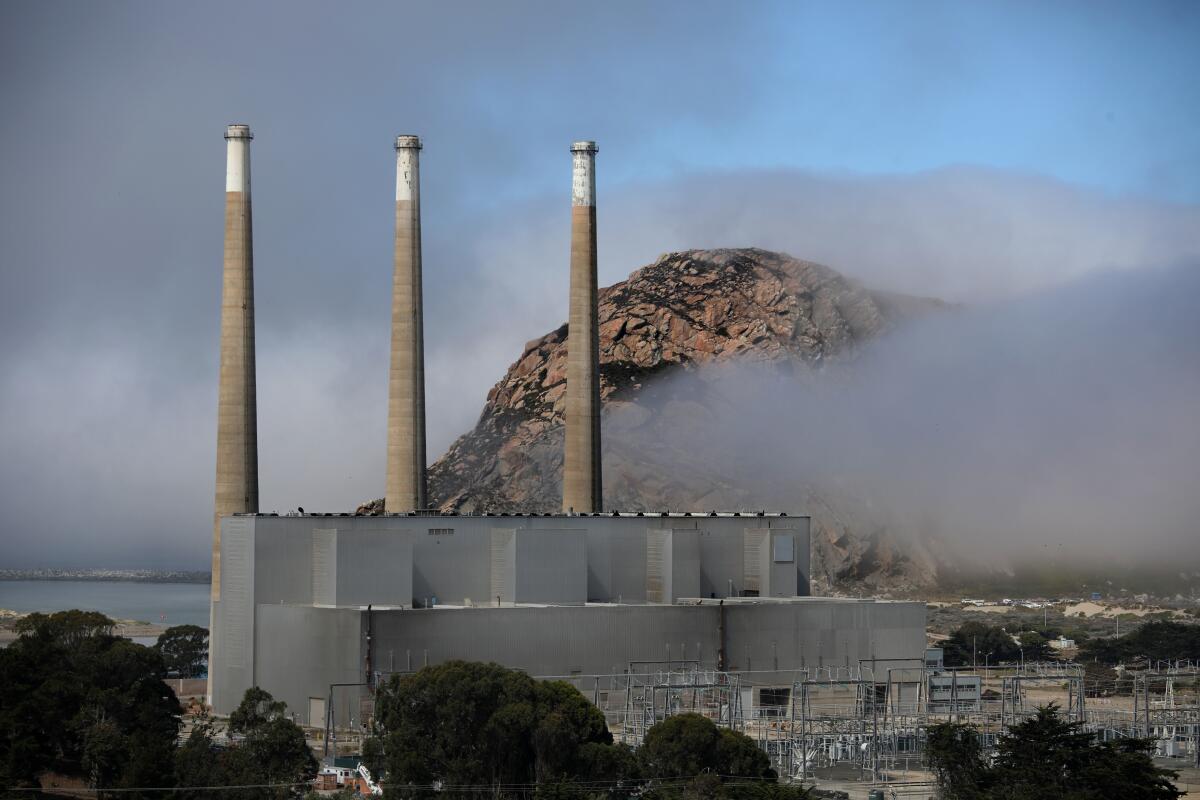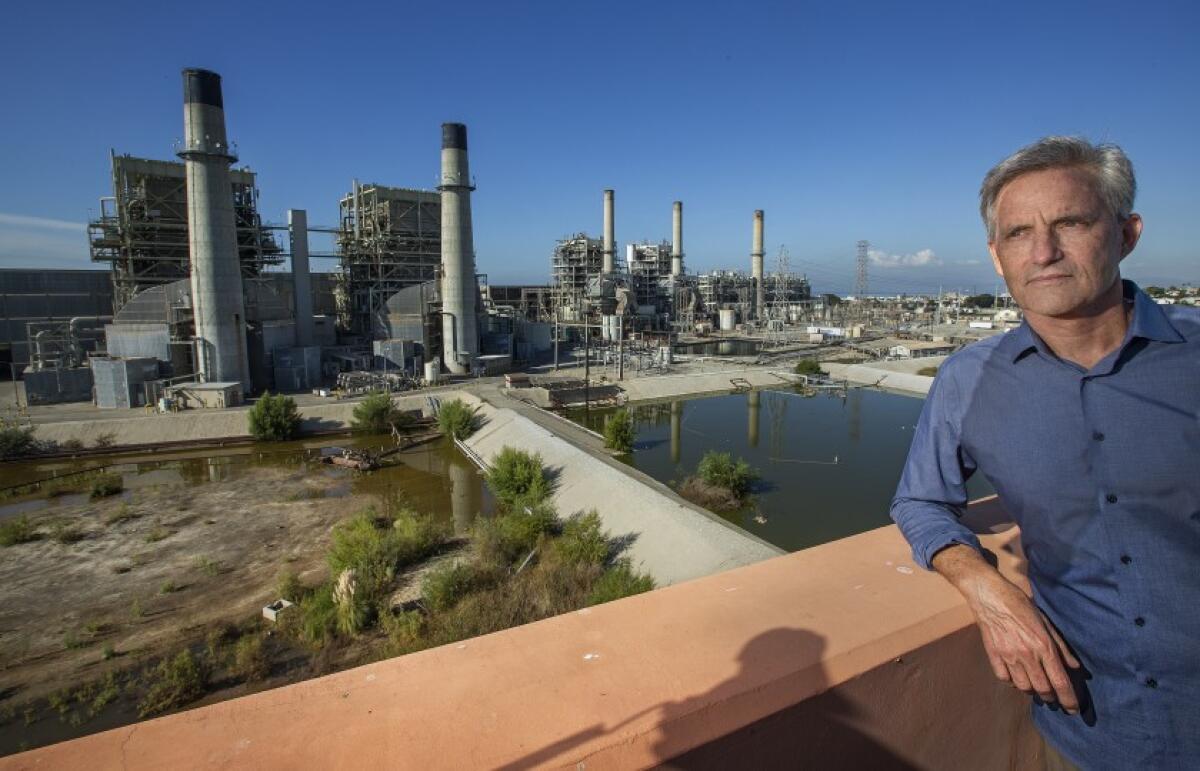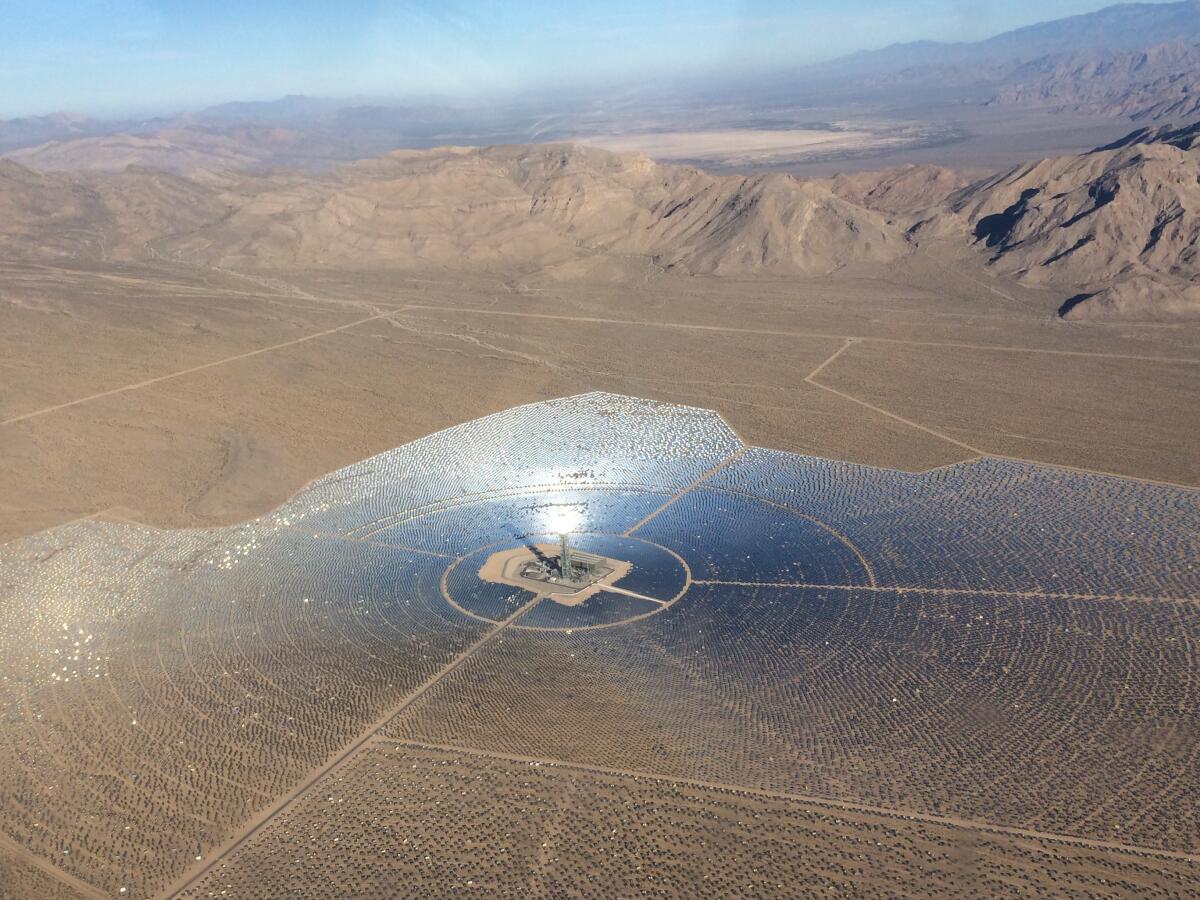California just can’t kick its coastal gas plant addiction

This story originally was published in Boiling Point, a newsletter about climate change and the environment. Sign up here to get it in your inbox.
California probably won’t have too much trouble keeping the lights on this summer, unlike the last few years.
Don’t get me wrong — if extreme heat blankets the American West for days on end, or wildfires knock out key electric lines, all bets are off. But state officials say the abundant snowpack in our mountains and water in our reservoirs should give us plenty of hydropower, helping avert blackouts even on hot evenings after the sun goes down and solar panels stop generating. Energy companies have also added thousands of megawatts of battery storage to the grid, to bank sunshine for the evening.
But the world is getting hotter, driving up demand for air conditioning. Fires continue to get bigger and hotter, threatening the electric grid. And with global warming drying out the Western U.S., most years won’t have so much hydropower.
That’s why state officials are once again preparing to extend the life of three gas plants along the Southern California coast.
The natural gas-fired power plants in Huntington Beach, Long Beach and Oxnard were supposed to shut down in 2020, under a regulation designed to protect marine life. But officials voted to let the polluting generators keep churning out power another three years, just a few weeks after California experienced its first rolling blackouts since the early-2000s energy crisis.
Now regulators are gearing up to approve another three-year extension, which would allow the plants to run through 2026.
It’s only the latest illustration of the difficult balancing act California faces in its quest to phase out planet-warming fossil fuels and show the rest of the world that addressing the climate crisis is possible. The state needs to rapidly transition to renewable energy — without plunging cities into darkness and sparking a backlash to solar farms, electric cars and electric stoves.

For now, Gov. Gavin Newsom and his appointees say the best answer is to keep burning gas at the coastal plants.
“I really, really hope we will not be in this place in 2026,” said Siva Gunda, vice chair of the California Energy Commission. “Even in the most conservative of assumptions, we should be able to build out of this hole we are in right now.”
The hole is not having enough solar-charged batteries and other clean-energy resources to keep the lights on after sundown. Building out of it will involve navigating rural opposition to large solar and wind facilities, and possibly pioneering new energy storage technologies without driving up electricity rates too much — not easy tasks, but within the realm of possibility.
But does bridging the gap between now and then really need to involve throwing a lifeline to gas plants?
Many climate activists say it doesn’t. As far as they’re concerned, counting on gas to keep the lights on is a foolish gamble.
A report released Wednesday by the California Environmental Justice Alliance and the Sierra Club explains why. The report examines how California’s dozens of gas plants performed during last summer’s devastating 10-day heat wave, when the Golden State avoided rolling blackouts only after Newsom sent out an emergency alert begging people to use less electricity.
The findings: Between 10% and 15% of the state’s 40 gigawatts of gas power was typically unavailable during the high-demand evening hours. High temperatures contributed to some gas plants generating less than expected and others going offline entirely.
Michael Goggin — vice president of consulting firm Grid Strategies, and the report’s author — said it wasn’t only gas turbines having trouble in the extreme heat. Some solar farms and lithium-ion batteries also suffered performance issues.
But the data underscore the reality that fossil gas can’t be counted on as a savior to keep the lights on, he said.
“The gas fleet performance was not very good,” he said.

Two of the three gas plants that state officials will probably allow to keep operating through 2026 performed especially poorly. One of the turbines at Ormond Beach Generating Station in Oxnard suffered a higher level of “curtailments” — meaning the amount of energy production lost — than any other gas unit in California, Goggin found. Another Ormond Beach unit had the sixth-highest level of curtailments. Two turbines at Alamitos Generating Station in Long Beach ranked in the top 15.
Alamitos was also one of the most polluting gas plants during the September heat wave, emitting more lung-damaging sulfur dioxide and nitrogen oxides — and heat-trapping carbon dioxide — than almost any other facility, Goggin found.
Which brings us to the other problem with burning natural gas for electricity.
Like other polluting industrial facilities, many gas plants were built in low-income communities of color, where residents didn’t have the political power to block their construction. Environmental justice advocates working with those communities are especially angry over the state’s efforts to once more extend the life of Ormond Beach Generating Station, which is in the predominantly Latino, low-income city of Oxnard, near neighborhoods already suffering from high asthma rates.
Gas plants aren’t nearly as polluting as coal plants. But that’s hardly an argument for keeping them around.
“The bottom line is that they’re poisonous,” said Ari Eisenstadt, energy equity manager at the California Environmental Justice Alliance. “We can’t as a society in 2023 keep saying that our only solution is something that we know factually, scientifically, to be poisonous, and that we know is disproportionately located in low-income communities of color. That is so clearly racist.”
That argument hasn’t swayed state officials, at least thus far.
At Newsom’s urging, lawmakers overwhelmingly passed a bill last summer creating a “strategic reliability reserve,” through which the state’s Department of Water Resources was given unprecedented authority to build or buy energy from any facility that can help keep the lights on over the summer. The agency responded, in part, by signing contracts with the owners of the Huntington Beach, Long Beach and Oxnard gas plants, which officials expect could ultimately cost taxpayers as much as $1.2 billion.
Those contracts will move forward only if the State Water Resources Control Board votes later this year to let the plants keep operating past their current December 2023 shutdown deadlines. That vote is looking more and more like a formality.

The Department of Water Resources is also required to submit its investment plans to yet another agency, the California Energy Commission, for approval. While it’s not entirely clear what would happen if the commission voted “no” — especially with the gas-plant contracts already signed — the discussion at last week’s commission meeting signaled a “no” vote is highly unlikely.
State officials say the gas plants would be fired up only during emergencies, limiting pollution. They also say the costs will likely come out lower than $1.2 billion because that estimate is based on an unlikely scenario in which the plants perform perfectly.
Those assurances offered little comfort to Oxnard resident Sofia Magallon, a policy advocate at the Central Coast Alliance United for a Sustainable Economy, or CAUSE. At last week’s Energy Commission meeting, she noted that Oxnard residents have been fighting fossil-fuel pollution for years, helping persuade state officials to block the proposed Puente gas plant in 2017.
“Our community was told that this plant [in Ormond Beach] would be shut down in 2023, and now we face yet another extension,” Magallon told the Energy Commission. “Our climate and community can’t wait any longer.”
Commission member Noemí Otilia Osuna Gallardo expressed sympathy for Magallon and others with similar criticisms. Gallardo said she grew up in Ventura County near the gas plant and pursued a career in public policy to correct injustices like this one.
“Having this big structure there that’s harmful to their health is an impediment for them to live a life of dignity and to achieve the prosperity that they need, because you can’t do any of that without human health,” Gallardo said.

Environmental justice groups want Newsom’s appointees to focus on other strategies for keeping the power on, such as local solar and battery installations, energy-efficiency upgrades and “demand response” programs that pay people to use less energy when there’s not enough to go around. The state has invested in all those areas, but critics say it could invest a lot more.
Shana Lazerow, legal director at Communities for a Better Environment, pointed to demand response in particular as a better way to ensure reliable power — and help low-income families make ends meet — than propping up aging gas plants. But she said the California Public Utilities Commission declined to adopt a pilot program proposed by the environmental justice community.
Lazerow blamed Newsom for keeping the state hooked on gas.
“Claiming climate leadership and then demanding an all-of-the-above [energy] strategy is not climate leadership,” she said.
The governor is standing by his actions. Newsom spokesperson Alex Stack said via email that the three coastal gas plants are “an essential backup resource that can be activated quickly to help prevent Californians from losing power” as climate change puts more stress on the grid. Stack also said that under Newsom’s leadership, California “has done more than any other state to transition to 100% clean electricity and slash air pollution in our communities,” with tens of billions of dollars in investments.
A spokesperson for AES Corp. — the Virginia-based power company that owns the Huntington Beach and Long Beach gas plants — referred me to a recent written statement in which the company’s chief executive, Andrés Gluski, said the facilities “continue to demonstrate that they are ready and able to support the reliability of California’s electric grid.”
Climate advocates did manage one victory: Another AES gas plant in Redondo Beach, which previously had its shutdown deadline extended to 2023 along with the other coastal facilities, is slated to close this December as scheduled.
Redondo Beach officials fought hard to get the plant shut down, and state agencies ultimately saw things their way, choosing not to pursue another extension. It helped that AES agreed to sell the land, although the sale is currently tied up in litigation.

Here’s the thing, though: Redondo Beach is wealthier than the other three cities where coastal gas plants are likely to keep humming. It also has a far higher proportion of white residents than two of those cities, Long Beach and Oxnard.
Environmental justice activists are well aware of the disparity.
“We cannot have sacrifice zones. That’s just a principle of environmental justice. You cannot sacrifice a group of people,” Eisenstadt said. “This is not a small sacrifice. This is not an inconvenience. This is cancer and heart disease and asthma.”
It’s not just California struggling to keep the lights on in an era of climate crisis. Texas officials asked residents this week to use less electricity during a heat wave, two years after a winter storm knocked out power to millions of Texans. The North American Electric Reliability Corp. has warned that extreme heat could lead to energy shortages in other regions this summer.
It’s also not just three coastal gas plants that have generated debate in Southern California.
The Los Angeles Department of Water and Power is seeking permission from state officials to operate its gas-fired Scattergood plant near El Segundo through 2029, past a current deadline of 2024 — part of DWP’s controversial plan to covert its gas fleet to green hydrogen. Glendale City Council voted last year to keep investing in gas. And Southern California Gas Co. has pressed state officials to allow more gas storage at Aliso Canyon, which supplies local power plants and sprung a record-breaking leak in 2015.
The local clean energy investments desired by environmental justice activists — rooftop solar panels, small urban solar facilities paired with batteries — could certainly help the Golden State ditch gas. So could larger-scale infrastructure, such as power lines designed to bring wind energy to California from Wyoming, where the wind blows strong into the evening. One such power line — the 732-mile TransWest Express transmission project, backed by billionaire Phil Anschutz — broke ground this week.
Keeping the Diablo Canyon nuclear plant operating past 2025 — another Newsom priority — could help, too.
But here’s the reality: California is still heavily dependent on gas and will be for years, even in a best-case scenario for climate action. Gas plants supplied 42% of the state’s power in 2022, according to the U.S. Energy Information Administration.
The faster we get off gas, though, the fewer toxins will be released into communities burdened by pollution for too long — and the less we’ll have to worry about increasingly deadly heat waves, wildfires and storms fueled by carbon in the atmosphere.
ONE MORE THING

I was vacationing at Walt Disney World over the weekend, and I was pleasantly surprised to discover a (relatively) new movie at Epcot that calls for climate solutions. “Awesome Planet,” narrated by “Modern Family” actor Ty Burrell, doesn’t mention climate change by name. But it does highlight the horrors of worsening heat waves and droughts, rising oceans, more extreme storms and more destructive fires. It also features a montage of wind and solar energy production while urging action.
“This planet, our home, is in peril. We need to protect it as if all lives depend on it — because they do,” Burrell says.
I’ve got an extremely niche complaint, though — one that I’ve aired before on Twitter.
Like many news articles about renewable energy, “Awesome Planet” uses a photo of the Ivanpah project in the California desert as a visual representation of solar power — even though the vast majority of large solar farms look nothing like Ivanpah.

This particular facility was built at a time when energy developers thought “concentrating solar” technology — in which mirrors direct sunlight at a fluid, heating it up to generate steam — might be the most efficient way to convert sunlight to electricity. But solar photovoltaic panels ended up getting a whole lot cheaper, becoming the dominant technology over the last decade.
Ivanpah and other concentrating solar projects, meanwhile, came under harsh criticism for frying birds that unknowingly tried to fly though the intensely hot beams of reflected sunlight. Some projects, including Ivanpah, also faced mechanical difficulties that led to lower electricity production than expected. Hardly any concentrating solar is being built in the United States today.
But that hasn’t stopped various news organizations from running scary-looking photos of Ivanpah’s mirrors and power towers — or Disney, it seems, even when the story being told about solar power is positive.
We’ll be back in your inbox on Tuesday. To view this newsletter in your web browser, click here. And for more climate and environment news, follow @Sammy_Roth on Twitter.
Toward a more sustainable California
Get Boiling Point, our newsletter exploring climate change, energy and the environment, and become part of the conversation — and the solution.
You may occasionally receive promotional content from the Los Angeles Times.




